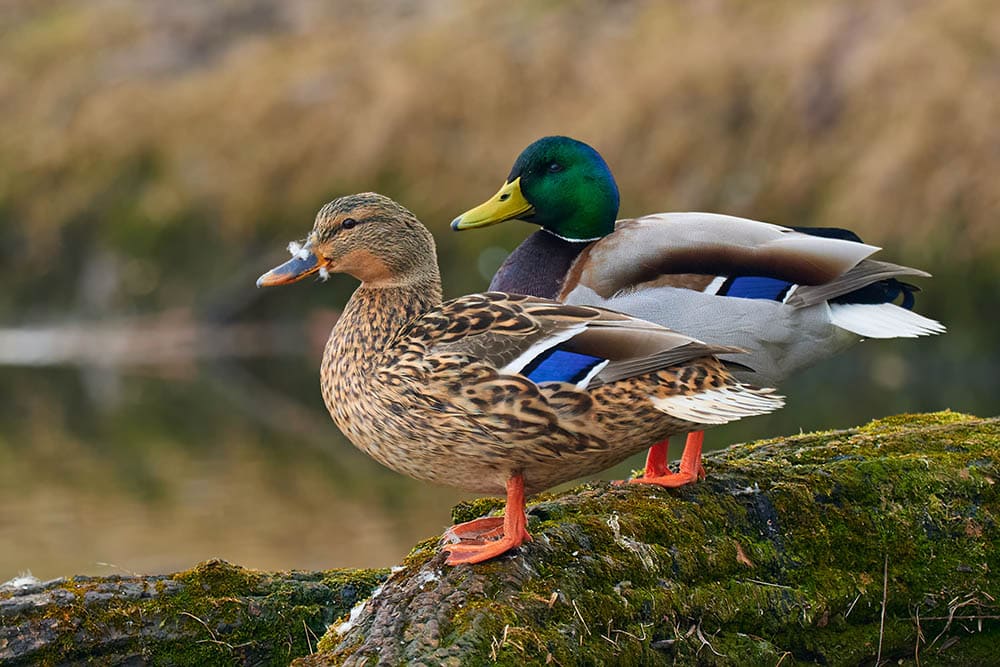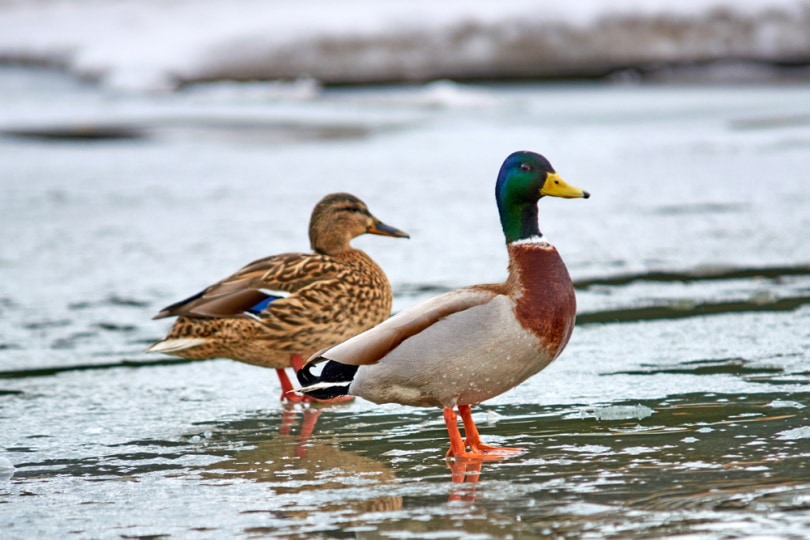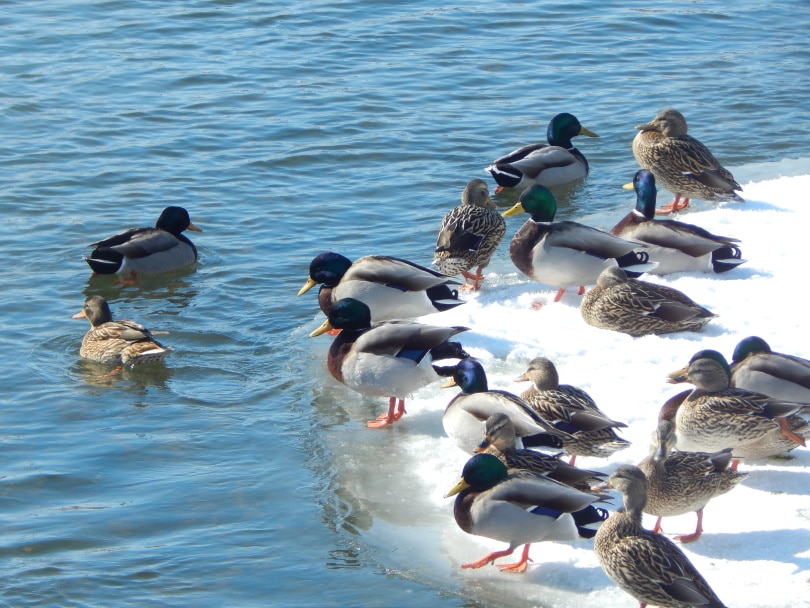Do Mallard Ducks Mate for Life? Everything You Need to Know!
Last Updated on

Most geese and swans mate for life, so it’s reasonable to wonder if mallard ducks mate for life as well. Mating for life is also referred to as long-term pair bonds, and only around 44% of waterfowl species do it.
Typically, waterfowl that form long-term monogamous bonds don’t do so until approximately 2 years of age. Also, both parents usually play a large role in raising the young. In the case of a death, the bird will eventually find a new mate, but the season’s breeding will likely be interrupted.
Interestingly, researchers have noticed that divorce is a thing among geese! The two birds have been recorded separating under various circumstances like failed laying and hatching of eggs or nesting attempts.

Do Mallard Ducks Mate for Life?
So, do mallard ducks fall into that 44%? No, they do not. Mallard ducks form seasonal bonds, sometimes referred to as seasonal monogamy. This type of bonding is how almost half of all waterfowl species mate.
A mallard duck is only with its mate until she lays eggs. Once the incubation begins, the male leaves his mate and finds an area that is filled with food, so he can start his seasonal molt. This may seem brutal, but that’s how the animal kingdom works, and it’s important not to attach human emotions to animals.

Why do Mallard Ducks Appear Affectionate?
Given that we know the male duck will split as soon as his mate lays eggs, it may be a surprise to see how affectionate a male mallard duck is. A mallard duck is fiercely devoted to its mate for the duration of their time together.
In some cases, male mallards have been known to remain by the side of their deceased mates or when there is imminent danger around. Some argue that this is simply an act of dedication to their role in the breeding process. Whatever the case, the little time these ducks spend together is connected and loyal.

Is This Type of Mating a Problem?
To some, this idea of abandonment may seem like an issue. But because this is just the way that mallard ducks are wired, the female is not taken by surprise. She is well-equipped to raise the ducklings on her own.
As soon as they hatch—at approximately 27–38 days—the mother duck rushes them into the water for safety. Then they spend the next 50–60 days swimming behind her in a line. By this time, the ducklings can fly and be on their own.

Closing Thoughts
A mallard duck can’t be faulted for not creating lifelong pairs. There may be a large number of waterfowl species that mate for life. However, if you open that up and expand to include mammals, that percentage drops to around three or four percent. Nature has a way of balancing itself out. The animal kingdom’s rules are different, even if something seems foreign to us as humans.
Featured Image Credit: Robert Adami, Shutterstock
About the Author Shea Cummings
Shea Cummings is a passionate content writer who believes that the power of words is immeasurable. He leverages years of experience in various trades such as carpentry, photography, and electrical to bring his articles to life. His goal is to provide his readers with information that delights and informs. When he's not writing you can find him spending time in the outdoors or playing some Minecraft on the Xbox with his wife and two sons.
Related Articles:
10 Types of Hummingbirds in Arkansas (With Pictures)
8 Types of Hummingbirds in Nebraska (With Pictures)
5 Types of Hummingbirds in Idaho (With Pictures)
3 Types of Hummingbirds in Mississippi (With Pictures)
8 Types of Hummingbirds in Kansas (With Pictures)
5 Types of Hummingbirds in West Virginia (With Pictures)
5 Types of Hummingbirds in Ohio (With Pictures)
Where Do Nuthatches Nest? Nuthatch Nesting Habits Explained
